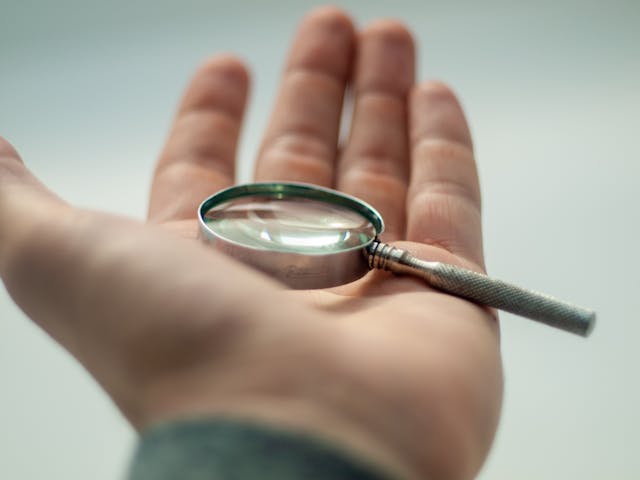The user experience design industry comprises many crucial roles that contribute to optimized digital products and increased customer satisfaction rates.
If you find yourself gravitating toward a role that focuses on your end users, you could become a UX analyst.
In today’s guide, we’d like to explore the role of a user experience analyst in more depth. Specifically, we’ll cover the role, responsibilities, skills, and UX contributions of a user experience analyst. We’ll even show you how you can become a UX analyst if you want to pursue this rewarding career!

What Is a UX Analyst?
A user experience analyst is a vital member of every UX design team you’ll ever come across. As analysts, their main objective is to understand user behavior, as well as the user’s needs, preferences, and expectations.
Overall, user experience analysts always aim to clarify how users engage with digital products like websites and mobile apps.
To achieve this understanding, analysts will assist UX researchers as they conduct their user-oriented research. They’ll then study the research findings to determine which features their products need to help the users achieve their goals.
This knowledge, along with an understanding of user-centered design principles, equips analysts to provide actionable recommendations to designers.
However, a user experience analyst’s work doesn’t end there. They must also ensure that a brand’s long-term business goals align with exceptional product usability to maintain user engagement rates. For this reason, UX analysts are always trying to learn more about the users’ interaction with a product, even post-launch.

The Main Responsibilities Within UX Analyst Jobs
Of course, there’s more to being a user experience analyst than what we discussed in the previous section. If you want to truly thrive within this role, you’ll need to understand the extent of an analyst’s main responsibilities, which we have outlined below.
- Understanding a brand’s goals and aligning them with the ideal user experience.
- Conducting user research alongside UX researchers to understand the users’ behaviors, needs, and desires.
- Analyzing data from user research and feedback to identify areas of refinement within a digital product.
- Identifying patterns/trends in the users’ behaviors.
- Creating user personas to contextualize the user further.
- Running usability/user testing sessions to determine the effectiveness of their design solutions.
- Examining key UX metrics like task success rate, time spent on task, error rates, and customer satisfaction.
- Building mockups, wireframes, and prototypes to visualize the user’s interactions with the product.
- Collaborating with different cross-functional teams, including design and development teams.
- Discussing analysis findings and recommendations with designers, developers, UX architects, product managers, and stakeholders.
- Consistently evaluating and improving the quality of the user’s experience, even after the product’s launch.

What Skills Are Required To Be a UX Analyst?
Fulfilling your obligations as a professional analyst means acquiring and refining must-have skills. To point you in the right direction, we’ve revealed what these must-have skills are below.
- An understanding of how a product’s visual design impacts and improves the user experience to build more engaging user interfaces.
- A solid expertise in user experience design elements, conventions, and principles.
- Solid research skills, especially when selecting the appropriate UX research methods.
- An understanding of the research participant screening process to find and recruit the most suitable participants.
- Strong analytical skills to derive actionable insights from user-focused data.
- Exceptional collaboration and communication skills to ensure every team member is on the same page during the UX design process.
- An ability to conduct a variety of relevant usability testing methods.
- Wireframing and prototyping skills to create accurate iterations and representations of the product’s final design.
- A great understanding of information architecture to improve the navigational flow of a product.
- Innovative problem-solving skills to approach and overcome any design challenges in a creative manner.
How To Become a UX Analyst
Let’s really get into what it means to be a user experience analyst. Below, you’ll find the steps you need to take to become a successful UX analyst.
1. Building Your Foundations
The first thing you’ll need to do is work on improving the skills we discussed in the previous section. We strongly recommend familiarizing yourself with UX design principles, different types of usability tests, and various user research methodologies.
We especially suggest that you look into qualitative and quantitative research methods. These research methods will reveal what users do and why they do it, which will help with your data analysis.
You should also allocate some time to practicing with analytical tools like Hotjar and Google Analytics. Ultimately, you should focus your efforts on refining your research, wireframing, prototyping, usability testing, and analytical skills.

2. Pursuing Formal Education
Once you’re familiar with the basics, the next thing you should do is consider studying for a formal degree. Currently, there aren’t any degrees that specifically delve into UX analysis, but that doesn’t mean you don’t have options. Consider studying a degree in the following subjects:
- Psychology
- Human-Computer Interaction
- Computer Science
- Interaction Design
- Information Technology
Any one of these degrees will bring you one step closer to becoming a UX analyst. Alternatively, you can complete online courses on the same topics on platforms like Udemy and Coursera.
Regardless of the qualifications you pursue, it’s important that you do, in fact, pursue them. After all, the UX industry is highly competitive, and you need to do everything you can to stand out.
3. Gaining Practical Experience
You’ll need some valuable practical experience to accompany your new knowledge and qualifications. You’d benefit from applying for entry-level UX jobs or internships that allow you to work side-by-side with UX professionals.
Alternatively, you can always take on freelance projects by searching on platforms like Upwork and Freelancer. You can even work on your own personal projects where you analyze and redesign existing digital products if you prefer.
The main thing is that you find opportunities that allow you to gain real-world, hands-on experience as a UX analyst.
4. Creating Your Portfolio
When you have a few projects under your belt, you can start to build a professional portfolio out of them. Your portfolio is the perfect place to show off your value as a team player and as an analyst.
We recommend picking the projects that best highlight your adaptability as an analyst. Consider picking projects that revolve around different types of products and user bases. This will help you emphasize your problem-solving, analytical, and collaboration skills.
Make sure always to explain the reasoning behind your design decisions and the methods that led you to make them. You should also discuss any design problems that you faced and how you overcame them.
Above all, your work should demonstrate to your clients/hiring managers how you can transform user data into actionable insights.

5. Monitoring UX Trends
As an analyst who focuses on what users need, you need to stay up-to-date on the latest design trends. We especially recommend looking into trends like personalization, AI, and inclusive visuals.
By consistently monitoring UX trends, you’ll find it easier to interpret patterns in user behaviors and preferences. In turn, this will help you create better digital products that your users and clients resonate with.
6. Expanding Your Network
Before you start applying for UX analyst jobs, we strongly advise you to participate in UX communities and forums. Forums like Designer Hangout are a great place to communicate with fellow UX professionals and gain valuable advice and mentorship.
The more connections you make, the likelier it is that you’ll come across more and more lucrative job opportunities.

What Is the Average UX Analyst Salary?
Before you finish reading our guide, we’d like to show you what you could earn as a user experience analyst.
According to Salary.com, UX analysts in the US will earn anywhere between $70,750 and $90,929 per year. This means that, on average, your typical user experience analyst will make $80,891 a year.
Becoming a UX Analyst: Let Page Flows Help You
We hope that you feel more confident about pursuing a career as a user experience analyst. To make you even more confident, we’d like to introduce you to a valuable inspirational resource: Page Flows.
Page Flows is the home of thousands upon thousands of annotated user flow recordings and screenshots. From onboarding to general browsing, we document every crucial step within the user’s journey.
Our user flows span both desktop and mobile products, as well as a generous variety of brands and industries. Most importantly, our flows reveal how dozens of different types of user bases engage with successful digital products.
As a UX analyst, our flows will help you learn more about what the modern user values and prefers. Get started with Page Flows now to learn what a successful user journey looks like!
FAQs
What is the role of a UX analyst in the product development process?
In the product development process, a UX analyst’s role revolves around ensuring a digital product meets the target users’ needs. They will collect and analyze user-focused data and research to understand the user. They will then use their findings to inform the overall design process.
What is UX analysis?
UX analysis acts as a means of collecting and studying user data to understand how users interact with a product. This analysis is essential to the optimization of said product.
What does UX stand for?
UX stands for user experience, and it concerns every element that affects the user’s experience as they interact with products.





